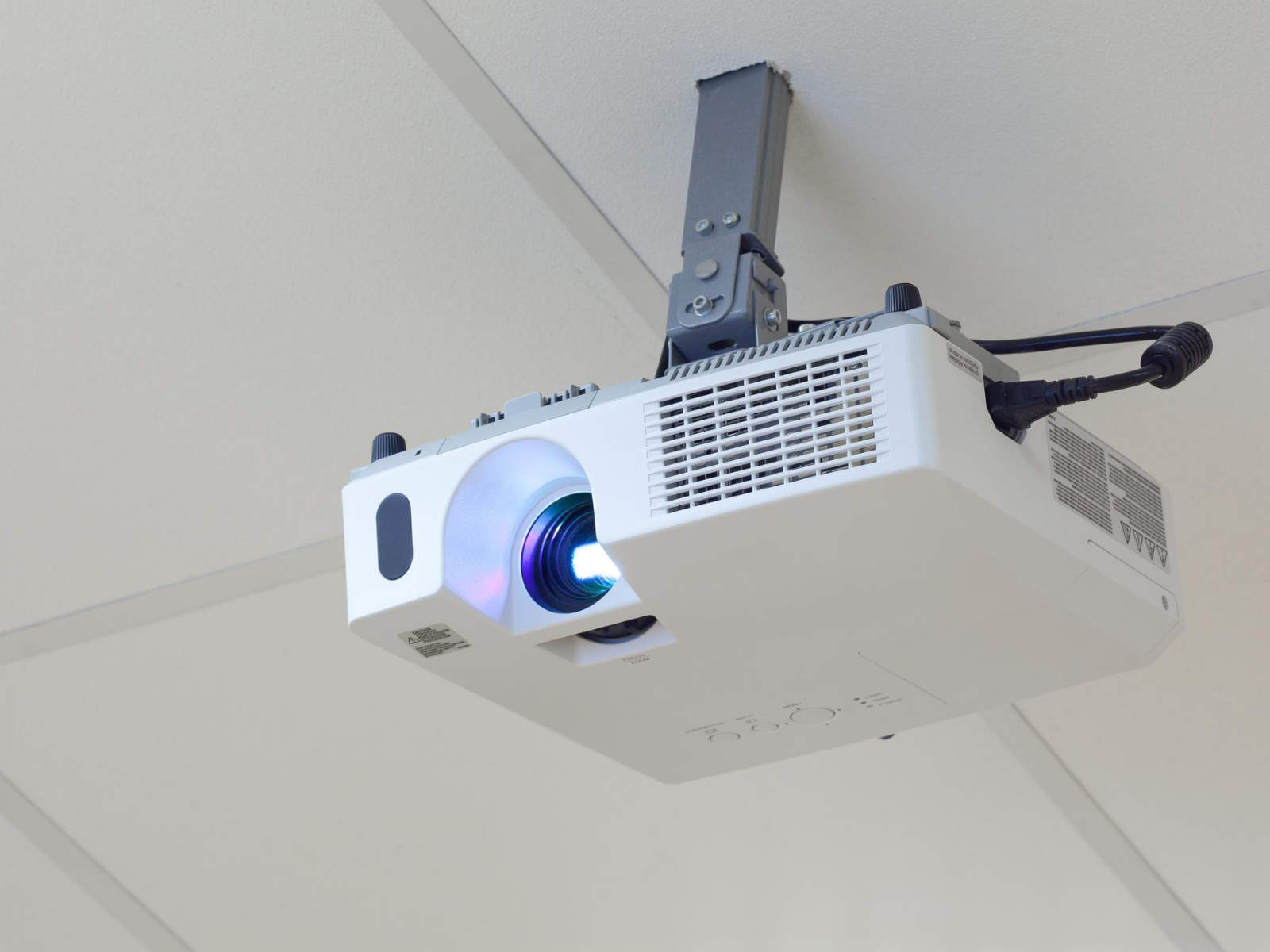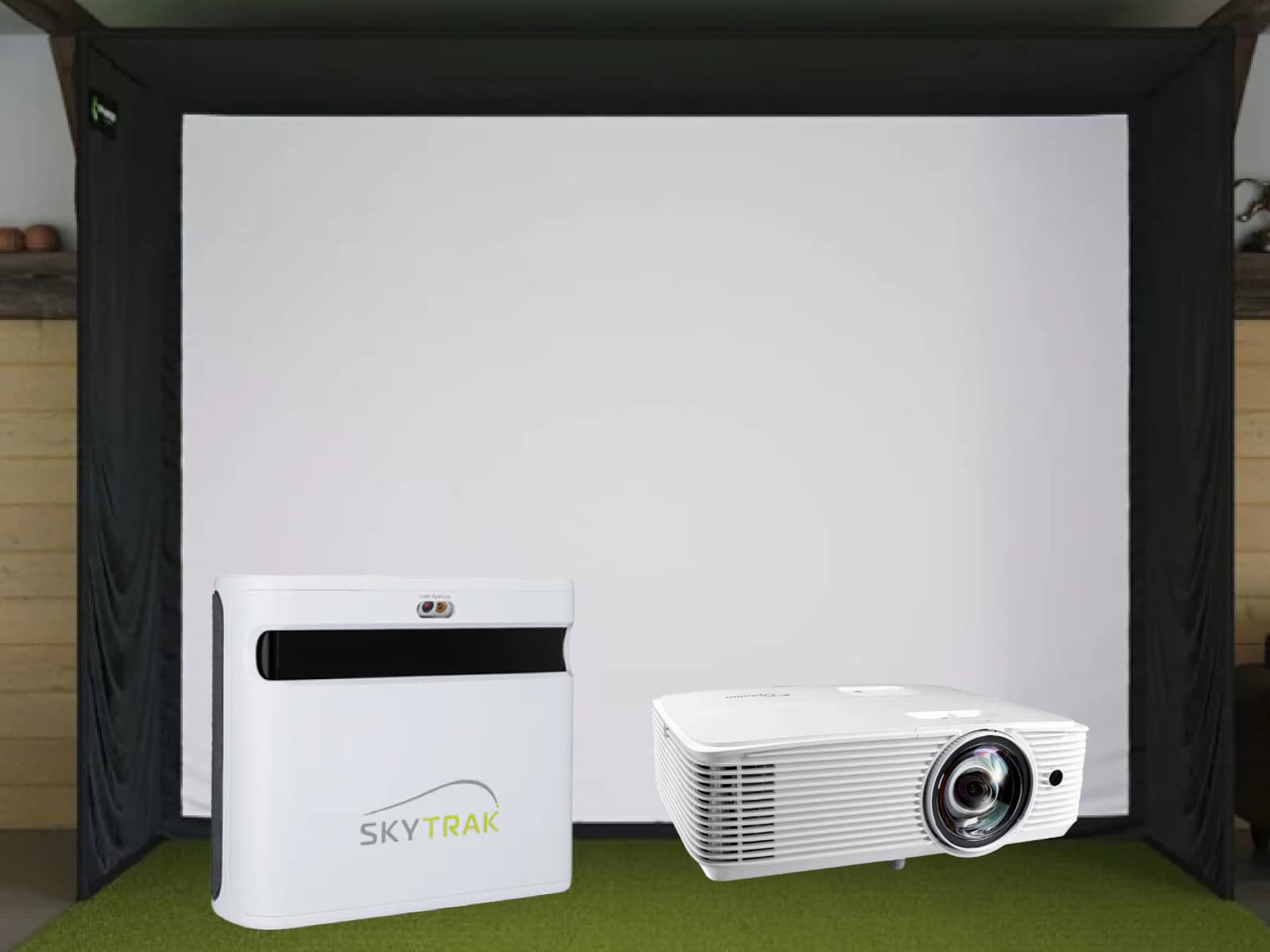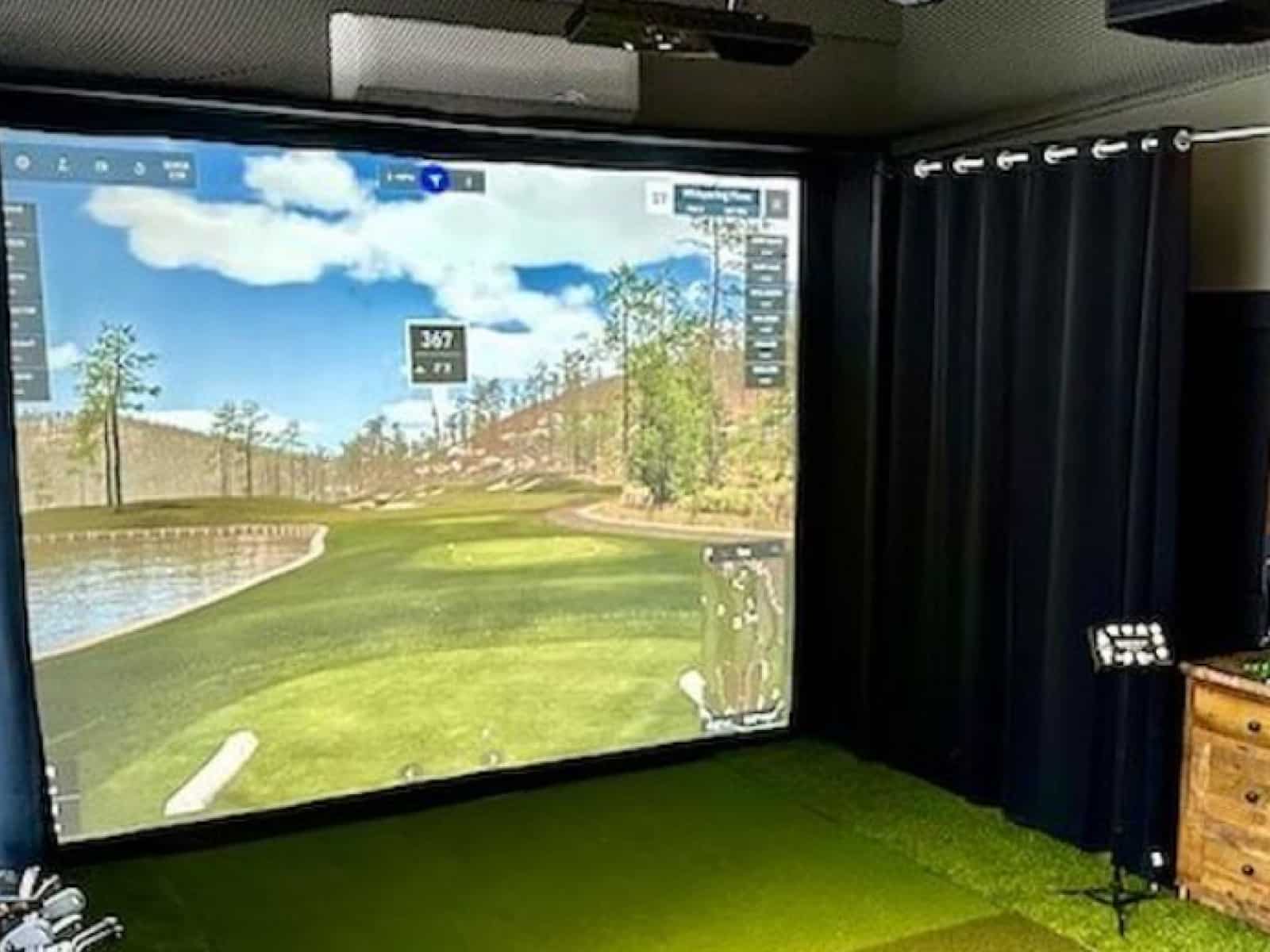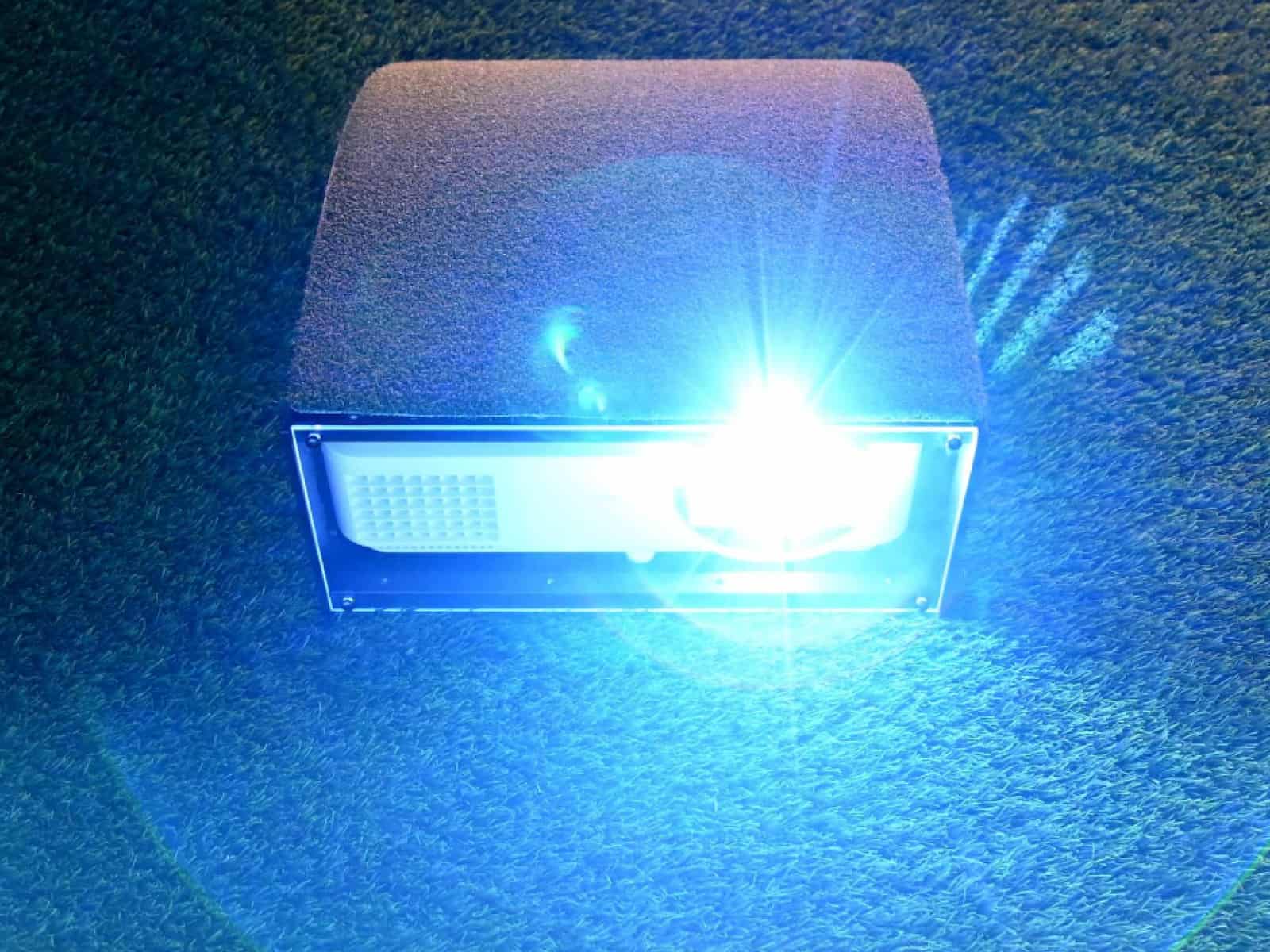With the rising profile of at-home golf simulators, there is increased consumer demand for cheaper, budget-friendly projectors that can still deliver good functionality. But can these more affordable models provide the bright, lag-free, and realistic performance needed for golf simulation?
This article will explore all the facets of this topic and examine some of the most popular budget-friendly projector options across various technologies involved in the manufacturing process.
The goal is to assess whether cheaper models can offer suitable image quality, brightness, input lag, and overall value for golf simulator setups.
Types of Projector Technologies
There are several projection technologies used in affordable home golf simulators, each with its own advantages and drawbacks.
LED Projectors
LED projectors utilize light-emitting diodes (LEDs) as the illumination source instead of traditional high-intensity discharge lamps.
LED projectors are a good option thanks to the compact size of their light source (allowing the overall projector housing to be smaller), energy efficiency (reducing electricity costs) and durability with a 30,000+ hour lifetime.
However, some limitations of this technology include the following:
- Lower brightness and uniformity – These projectors struggle to produce the lumen counts needed for vivid golf simulation, especially in brighter environments, making it difficult to see the ball flight.
- Mediocre color reproduction – The RGB LED combination can’t always reproduce the entire color spectrum, resulting in duller image quality.
So, while LED models offer convenience and cost savings, image quality can suffer without advanced LED engines. There are a few LED-based projector models in lower price ranges that aim for golf simulator functionality:
- LG PF50KA – $270
- ViewSonic PA700W – $430
These affordable LED picks work well for more casual home racing/flight simulator setups. Their combination of brightness, response times and color accuracy provide engaging experiences. Just temper expectations around image depth compared to pricier laser options.
Within a limited budget, the PA700W and PF50KA make for compelling starter projectors before upgrading. Focus on optimal projection positioning and calibration to maximize their immersive effects.
Laser Projectors
Laser projectors use laser diodes to produce intensely bright, vibrant projection light. Some of their advantages include extreme brightness levels, great color accuracy and a 20,000+ hour operation lifetime.
Still, a laser projector can be very expensive, with good-quality models costing multiple thousands (over $5,000). Additionally, their higher performance requires adequate cooling of their components, meaning that their cooling systems can be noisy and bulky.
There are few laser models under $2,000 able to meet golf simulator needs:
- Optoma GT2100HDR Laser – $1,399
- LG ProBeam HF85LSR – $1,400
Lasers projectors promise best-in-class graphics with astounding colors and very bright display, but they currently carry premium pricing, making them out of reach for the budget-conscious buyer.
DLP and LCD Projectors
DLP and LCD are two common digital projection technologies used in affordable home theater and simulator projectors.
Digital Light Processing (DLP) employs optical microchips with tiny mirrors to precisely reflect light. DLP projectors provide very smooth motion handling and fast response times, which helps eliminate ghosting and delay during games.
Potential issues with DLP units include the following:
- “Rainbow effect” artifacts possible
- Can lack color uniformity
LCD (Liquid Crystal Display) projectors use LCD panels to manipulate light; they provide natural colors but have slower performance and response times.
As with most projector types, entry-level 1080p DLP and LCD projectors can work reasonably well for hobby golf simulation. But high-level training and analysis require advanced units pushing over 3,000+ lumens. Single-chip DLP and basic LCD models have comparable overall performance.
Evaluating Budget Simulator Projectors
When shopping for a home simulator projector on a budget, there are a few key factors to consider that impact realism, playability, and the overall user experience.
Carefully evaluating projectors on criteria such as image brightness, lag/response times, color accuracy, operational life, and noise output ensures you select a model well-suited to your needs and environment without breaking the bank.
Brightness and Uniformity

Most critical to immersive simulator use is having sufficient brightness, measured in lumens, to clearly view projected imagery in a variety of lighting conditions. A minimum of 2500-3000 lumens is recommended for brightly lit rooms, with lower light conditions allowing reduced lumens.
Uniformity is crucial, too. Ensure brightness is consistent across the entire projected image, without noticeable hotspots or dark corners.
Lag and Response Times
Fast response times and low lag provide vital responsiveness between simulator inputs and on-screen actions. It is calculated in milliseconds (ms/)/
Under 50ms input lag is ideal, while slower response times can impact gaming performance. Evaluate not just grey-to-grey measures but opt for projectors with dedicated gaming modes to minimize lag.
Color Accuracy
Vibrant, accurate color reproduction enhances realism and immersion within simulators. Prioritize projectors providing full 1080p resolutions (with 4K most probably being out of budget), sRGB color gamuts close to 100%, and high static contrast ratios (5000:1+). Additionally, consider lifespan metrics (20,000+ hours) for consistent day-to-day use. The closer you get to these criteria, the better the entire virtual experience will be.
Within budget constraints, carefully weighing factors like brightness, speed, color accuracy and noise output ensures selecting the simulator projector best matching needs and environments for optimized realism and playability. These elements are vital to maximum immersion and enjoyment.
The Verdict – Are the Cheap Models Functional?
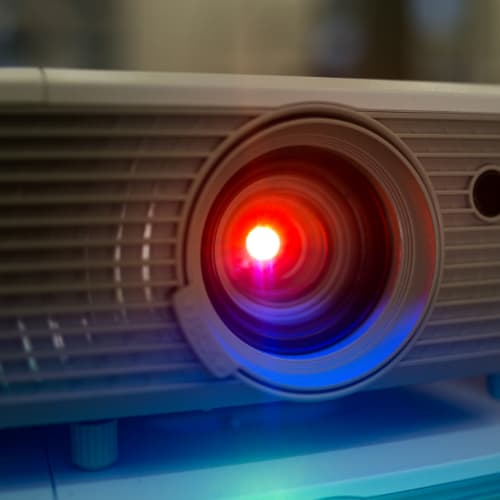
It is possible to opt for cheaper off-brand projectors and achieve satisfactory visual performance. However, you must set realistic expectations and be aware of potential drawbacks compared to pricier, name-brand projectors. Going off-brand is always a gamble.
For home simulators where immersive visuals are not the top priority, budget LED and LCD projectors under $300 can provide playable picture quality in a dark room when properly positioned. Models in the $200 range balance cost while meeting minimum resolution and brightness needs for basic simulation. Even entry-level laser and DLP projectors can be out of budget for our ultra-low-budget quest.
Reviews show certain lesser-known brands like WiMiUS surprisingly meet expectations. We tried the Wimius P64 projector, and we were surprised by its performance. Their P62 model is also surprisingly good for the price.
With that said, there are definite caveats to ultra-cheap projectors, including inaccurate lumens ratings, muted colors, loud fan noise, limited connectivity, and shorter lifespan. For more discerning users wanting vibrant, true-to-life visuals, stepping up to reputable brands like BenQ pays dividends in color vividness, longevity, and noise level.
All in all, viable budget-friendly projectors exist for casual golf simulation in darker spaces. But prioritizing picture quality requires investing at least $500+ for better lamp-based projectors or $1000+ for advanced laser options. If you understand your needs and temper your expectations, some cheaper, budget-friendly projectors can surely deliver basic playability.
Will Any Projector Work for a Golf Simulator?
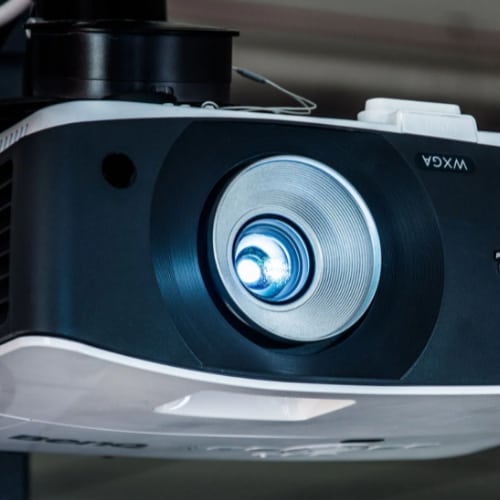
The answer is yes, nearly any projector can display images and video content on a screen; however, not all projectors are suited for an optimal golf simulation experience.
While an older business projector may save money upfront, the technology is not tailored specifically to excel in today’s graphics-rich golf simulators. Carefully matching your simulator display surface to a bright, lag-free projector designed for media consumption is key. Prioritize image brightness, response times and alignment flexibility during selection to ensure you get the best experience possible and for those interested in finding the top models that meet these criteria, visit our detailed article on the best golf simulator projectors.
For enthusiasts who are ready to take their setup to the next level, proper equipment selection is just one piece of the puzzle. To learn the full scope of creating a personalized golf experience, check out our how to build a golf simulator guide.
Final Thoughts
When selecting a budget home simulator projector, carefully weighing aspects like brightness needs, lag, color accuracy, and operational noise ensures choosing a model well-suited to space constraints and use cases without overspending.
Carefully evaluating projectors on core criteria results in realistic imagery and immersive experiences, even on a budget. Also, Try to get the most out of display positioning and calibration to maximize perceived quality.
If you still have any questions or comments, feel free to contact us.
Thanks for reading!


